London Underground’s fleet is already changing, but more is to follow. A massive order is in the pipeline for the New Tube for London deal, offering a number of companies the opportunity to build 250 new trains for the Deep Tube.
Of course, Bombardier is throwing its name into the ring in terms of prospective manufacturers. It recognises the challenges it faces, but believes its success with the Victoria Line and S-Stock designs stand it in good stead for the contract, which will be worth between £1 billion and £2.5bn.
The concept has been unveiled by London Mayor Boris Johnson, and trains will enter service in the mid-2020s. No deals have been let, and the Invitation To Tender (ITT) has not yet been issued. But that has not stopped manufacturers such as Bombardier, Alstom and Hitachi discussing the plans, while Siemens has built its own version of a design for what it hopes to offer. The battle is clearly on.
The trains will offer air-cooling systems for the first time on the Deep Tube parts of the network. They will operate on all deep-level lines with the exception of the Victoria Line, where the trains built by Bombardier that entered service from 2009 onwards are in traffic.
LU already operates trains with air-cooling systems - the Sub-Surface Line S-Stock trains that entered traffic from 2010 onwards, and which were built by Bombardier in Derby.
That contract, for which construction will be completed at the end of the year, features 191 trains introduced onto the Metropolitan Line followed by the Circle, Hammersmith & City and District Lines.
A mixture of seven-car and eight-car trains, they are performing at a “staggering level”, according to Bombardier. So much so that reliability levels written into existing contracts have been upped 33% to reflect performance.
Bombardier says: “We are the only supplier of air-conditioned Tube trains. We have over two million engineering hours of recent experience with London Underground and we believe that experience offers a unique benefit for the new deal.”
It is expected that the ITT will be issued this year, with the contract for 250 trains awarded in 2016.
The first line to receive the new trains is expected to be the Piccadilly Line in 2022. The trains on that line date from 1973, and there is a fleet of 86, of which 79 are needed per day.
In the new deal 100 trains will be delivered for the line, increasing capacity by 60% (equivalent to 19,000 passengers per hour). The current fleet was refurbished in 1995-2000, but needs replacing and is now the oldest fleet of trains on the LU network.
TfL has chosen this line first because “the Piccadilly line currently serves 210 million customers a year and demand is expected to grow 20% by 2020. The Piccadilly Line has therefore been prioritised as the first of the four lines to benefit from the new trains and signalling system.”
Elsewhere, 100 new trains are needed for the Central Line, resulting in a 25% capacity increase (equivalent to 12,000 passengers per hour). Forty trains will be delivered to the Bakerloo Line, representing a 25% increase or 8,000 passengers per hour) while the Waterloo & City Line will receive ten new trains that will increase capacity by 50% (9,000 passengers per hour).
All will feature air-cooling equipment, step-free access and walkthrough gangways, as per the S-Stock.
Bombardier is under no illusions when it comes to the complex nature of the New Tube for London deal. “We realise that designing these vehicles will be challenging,” it says.
However, it is adamant it can take the success of the Victoria Line and SSL fleets, and build on it. The key challenge, it believes, is to introduce key elements of technology from S-Stock and other successful fleets into a product the size of the VLU design.
Components cannot just be directly lifted from the S-Stock and added to a VLU train, because of the latter’s restricted loading gauge. Due to its compact size, the VLU design is already ‘packed’, the manufacturer suggests.
So this means looking at it from a different angle and using innovative ideas to come up with a solution. Elements of both will be used, while Bombardier hints at some new ideas as well. Maximising reliability is also vital for the new project.
The deal is for between 2,000 and 2,500 vehicles, with the build rate built into the customer requirements. It will be roughly six years between the contracts being let and the first train entering traffic.
TfL has worked with transport design specialist PriestmanGoode to come up with the exterior and interior design for the trains, which it believes is both functional and modern while still echoing the Tube’s heritage.
Bombardier recognises this work, and says: “LU has spent a lot of time thinking of their identity and what that means for the trains. It wants a cohesive design language across all aspects of its operation, covering the rolling stock and the architecture. Key elements of that design language are derived from its heritage and the heyday of design in London Underground, and it is keen to reflect that iconic feel.”
It is intended that these new trains will run on the LU network for more than 40 years and be fully capable of full automatic operations. Driverless trains are the future for LU, it has stated.
TfL says that reliability will be improved by the introduction of new signalling systems that will create more capacity for LU to run faster trains at a more frequent level with fewer delays. It says: “By introducing new modern signalling systems and new trains on the Bakerloo, Central, Piccadilly and Waterloo & City lines, delays due to signal and train failures will be reduced.”
Performance is expected to be higher than the VLU fleet, where currently 34 trains per hour operate, with trains operating at 500,000km per technical failure on a route that is only 13 miles long.
TfL says the single design concept allows for a more efficient train procurement and long-term maintenance procedures, and that building the new trains brings better performance.
In a feasibility study for the New Tube for London, it said: “Modern rolling stock has a higher performance capability than the existing trains with better acceleration and braking characteristics. These can reduce journey times and enable a higher frequency service to be operated from a given fleet size. Higher performance capability is a core feature of a train system upgrade, and one which has been achieved on several Underground lines over the past two decades.”
It also says that the wide gangways that form part of the design will bring many passenger benefits, including additional capacity, improved internal configurations and more floor space. Passengers can move easily between carriages, meaning that they can distribute better around the train, which in turn reduces dwell times as passengers are able to board trains faster at busier stations.
Security is also improved, TfL said. “The provision of a more continuous open space within the vehicle improves security and reduces the opportunity for antisocial behaviour.”
It also highlighted the restrictions placed on the system by the traditional train configuration.
“Provision of through gangways on a Deep Tube train with traditional configuration is very difficult, if not impossible, due to the dynamic behaviour of the vehicles. Tight curves, in particular, lead to large relative movements between vehicles ends. This means an inter-car gangway would not be possible without removing doors at the end of the carriages, due to the length of the gangway which would be required.”
It says that the new project has identified that: “it is possible to provide an inter-car gangway by altering the Tube train design to incorporate an articulated configuration with more, shorter carriages. By positioning the vehicle bogies under the ends of two adjoining cars, the relative vertical and lateral movement of the carriage ends is significantly reduced. This enables a shorter, wide gangway to be fitted without loss of train capacity or a reduction in the number of doors.
“The repositioning of the bogies allows all train doors to be double doors. Double doors allow for rapid access and egress, which reduces dwell times. Controlling the dwell times becomes a dominant factor for achieving high frequency service levels, due to reduced intervals between trains.”
Laboratory trials have been carried out with University College, London, to develop these studies. These supported the existing data on train size and length, as well as dwell times, and were used to inform train design options and evaluate different configurations.
TfL has carried out detailed surveys of existing infrastructure, including tunnels and platforms, to assess the constraints faced by putting new-build trains with air-cooling systems, into tight Victorian tunnels. It found that train length is critical as a design parameter. Increasing length improves capacity but increases the number of infrastructure modifications needed. This is recognised as being potentially time-consuming and expensive.
But TfL is hopeful. It said in its feasibility study: “Comprehensive and ongoing dialogue with train manufacturers has given confidence that we can include requirements for saloon cooling as part of the train procurement.
“Studies completed to date have been based on ’conventional’ cooling systems which use refrigerants to cool air which is then pumped into the saloon. As a minimum, conventional cooling will be specified in new train procurement.”
There are various methods being investigated, including ‘hybrid’ cooling systems as potential solutions to conventional saloon cooling. Hybrid systems allow generation and storage of thermal energy while trains are operating outside of tunnels. This is then used to cool the air for circulation in the saloons when the trains operate in the tunnels. This would enable less heat to be discharged into the tunnels and Underground stations, which would potentially reduce the need for infrastructure cooling and/or reduce temperatures.
The New Tube for London project is an exciting, game-changing project for the Underground. It requires innovation and new designs. Bombardier hopes its experience from the SSL and VLU trains will give it the advantage.
- This feature was published in RAIL 767 on February 4 2015

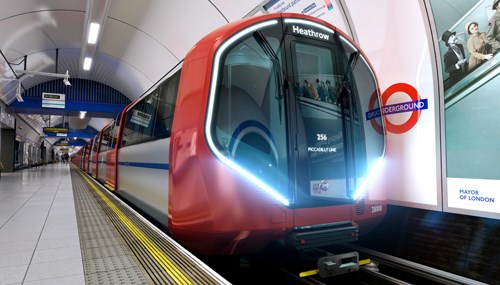
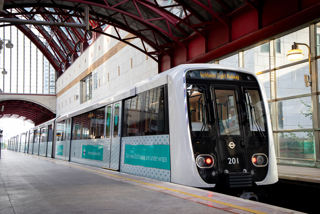
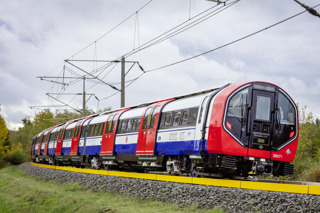

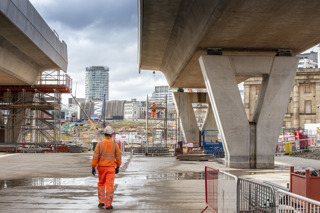
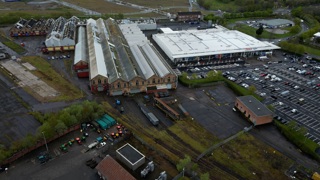











Login to comment
Comments
No comments have been made yet.